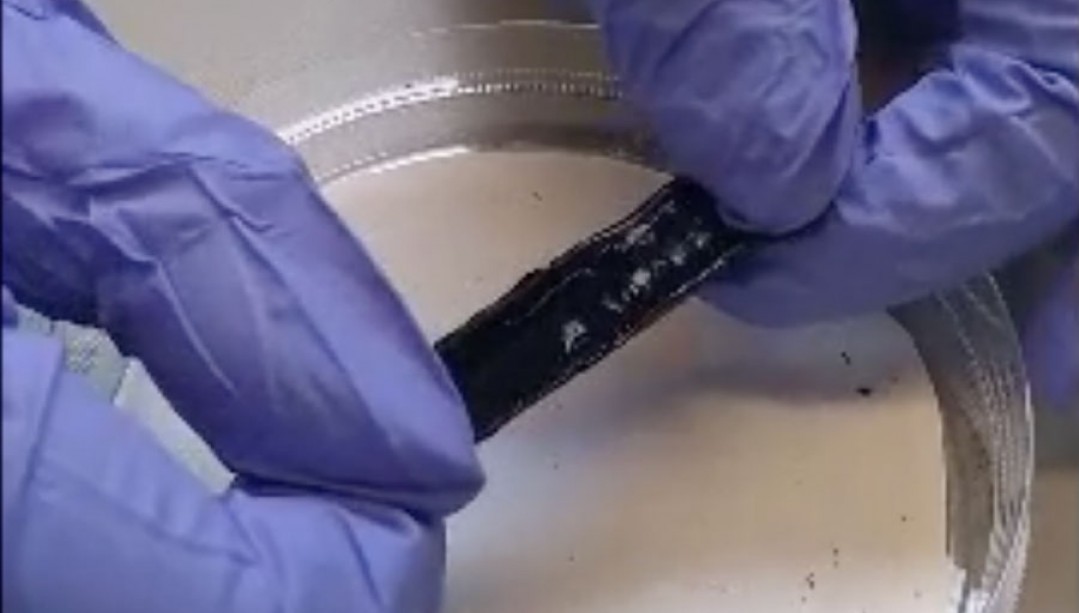 UWindsor chemist Simon Rondeau-Gagné hits play and what follows looks like a magic trick.
UWindsor chemist Simon Rondeau-Gagné hits play and what follows looks like a magic trick.
A video shows Master’s student Julia Pignanelli manipulating a rectangle of jelly-like material in her fingers, stretching it to eight times its normal length before letting it revert to its original form. She then puts it down and slices it in two with a utility knife. She positions the two pieces so they touch and, voilà, the material is whole again.
It’s no optical illusion or sleight of hand, Dr. Rondeau-Gagné assures: “It’s chemistry.”
The self-healing elastomer is the latest technology developed by Pignanelli, Rondeau-Gagné and engineering professor Jalal Ahamed. They recently obtained a provisional patent on the invention.
It’s similar to the silicone-based material used in contact lenses, but with special properties. It not only heals itself, but once cut, the material at the location of the damage is stronger than it was originally. The healing at first took 24 hours, but through further experimentation, the team has cut that time down to just two hours.
“The idea behind this research is we’re trying to find more robust, formable materials,” said Pignanelli.
The researchers have been churning out innovation of late. The University is currently conducting market research on another of the team’s patented inventions— a new way to produce flexible pressure sensors.
The research team collaborated with materials chemist Tricia Carmichael, who specializes in wearable technology, for her expertise in soft materials, explained Rondeau-Gagné.
The sensors are different than anything currently on the market to measure pressure in that they are cheaper, more durable, and more sensitive at higher pressure. They can be mass produced using molds, requiring no specialized equipment or a special environment, Rondeau-Gagné explained.
The sensors consist of layers of electrodes with insulating material between the layers. They are embedded in a polymer that can be produced in any shape or size with a customizable, textured surface. They could be made from the self-healing elastomer, extending their lifecycles.
The sensors could be integrated into smart beds used by seniors or hospital patients to sense pressure points that could lead to bedsores, or to sense the movement of someone prone to falls getting out of bed. They could be used in manufacturing equipment, in automotive parts, in consumer electronics, or in the manufacture of robots made from soft materials. They could also be used in smart clothing or shoes or in medical applications where the pressure generated by human motion needs to be measured.
Rondeau-Gagné said the technology has attracted the attention of an agricultural equipment manufacturer who is interested in incorporating the sensors into tractor treads. The sensors would be tied to a warning system, alerting the driver of degradation of the tread.
Pignanelli chuckles looking back to when she applied to Dr. Ahamed’s engineering lab. Her undergraduate degree is in biochemistry, she explained. She said she at first felt like a fish out of water in an engineering lab, but the collaboration led to her having two patents to her name by the age of 23.
“This research has been a stepping stone for me,” said Pignanelli, who plans to start medical school in Florida this fall.
The multi-disciplinary work brings together the worlds of engineering and chemistry, Rondeau-Gagné said.
“When you have this type of collaboration, you can come up with some pretty cool research and innovations.”
